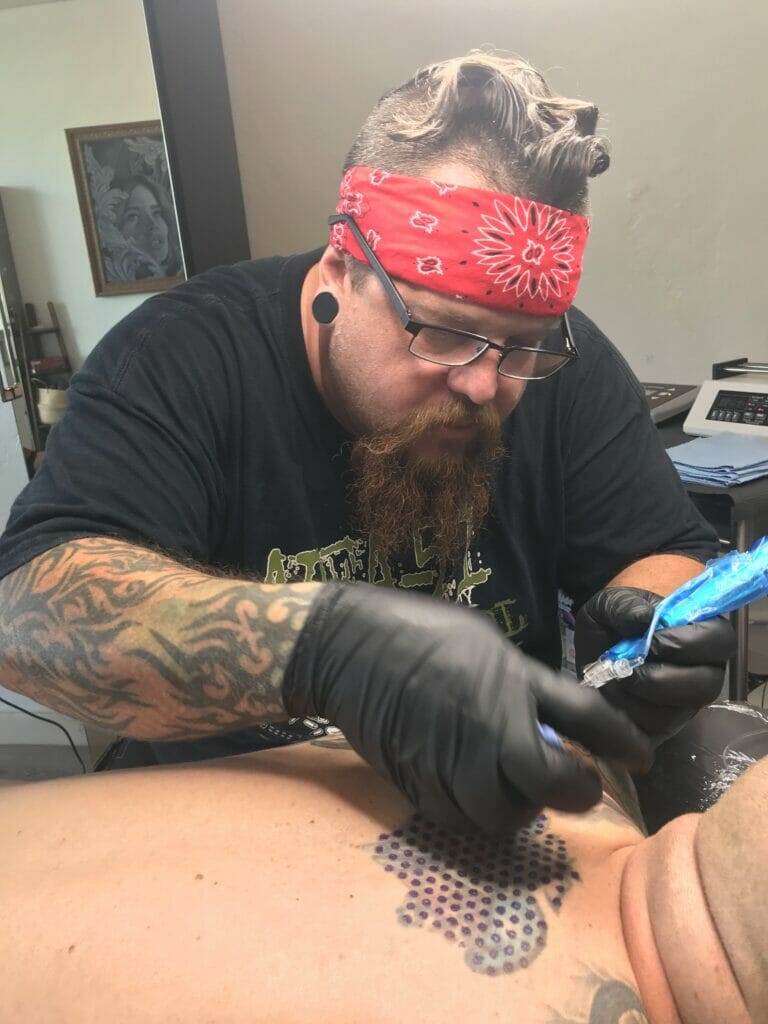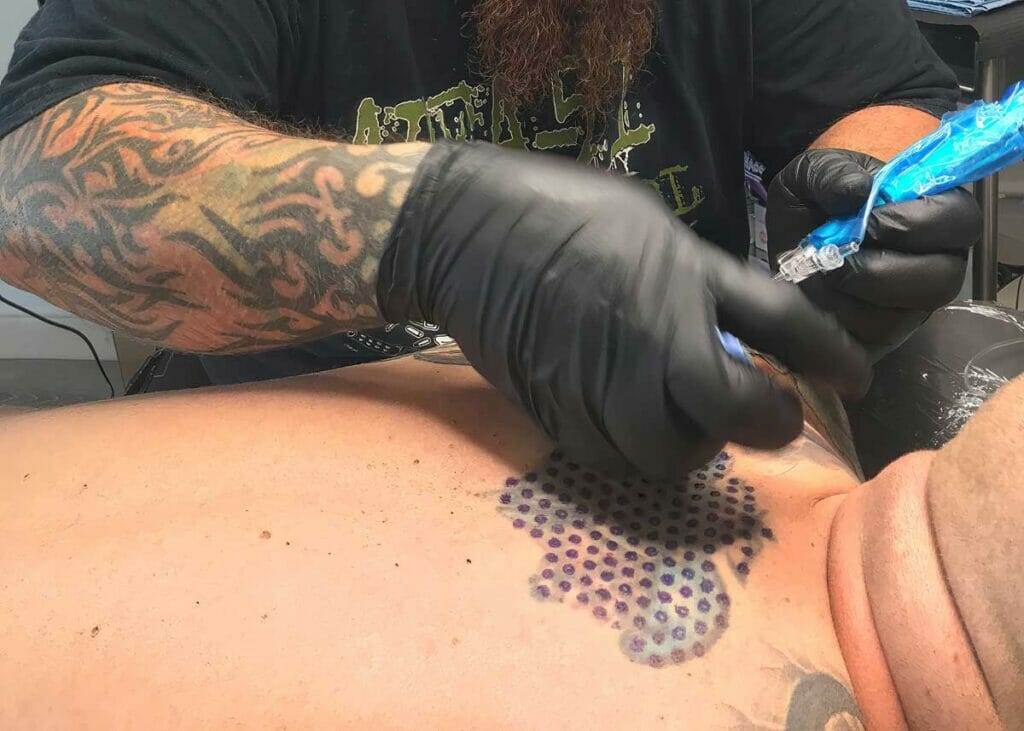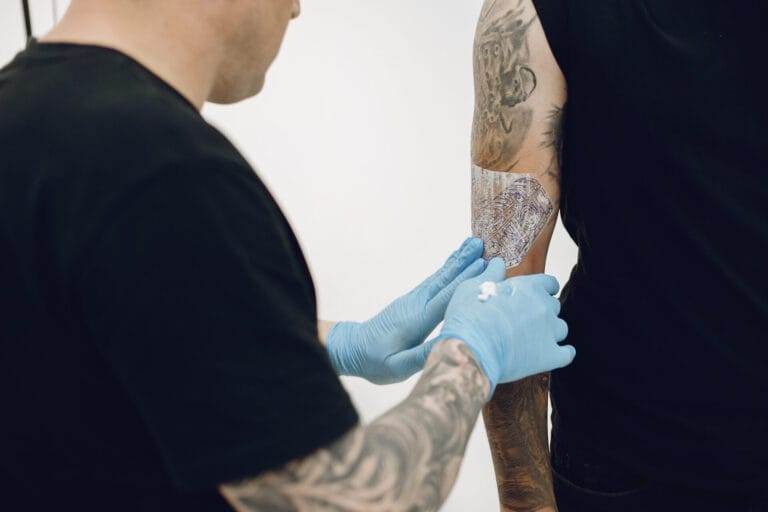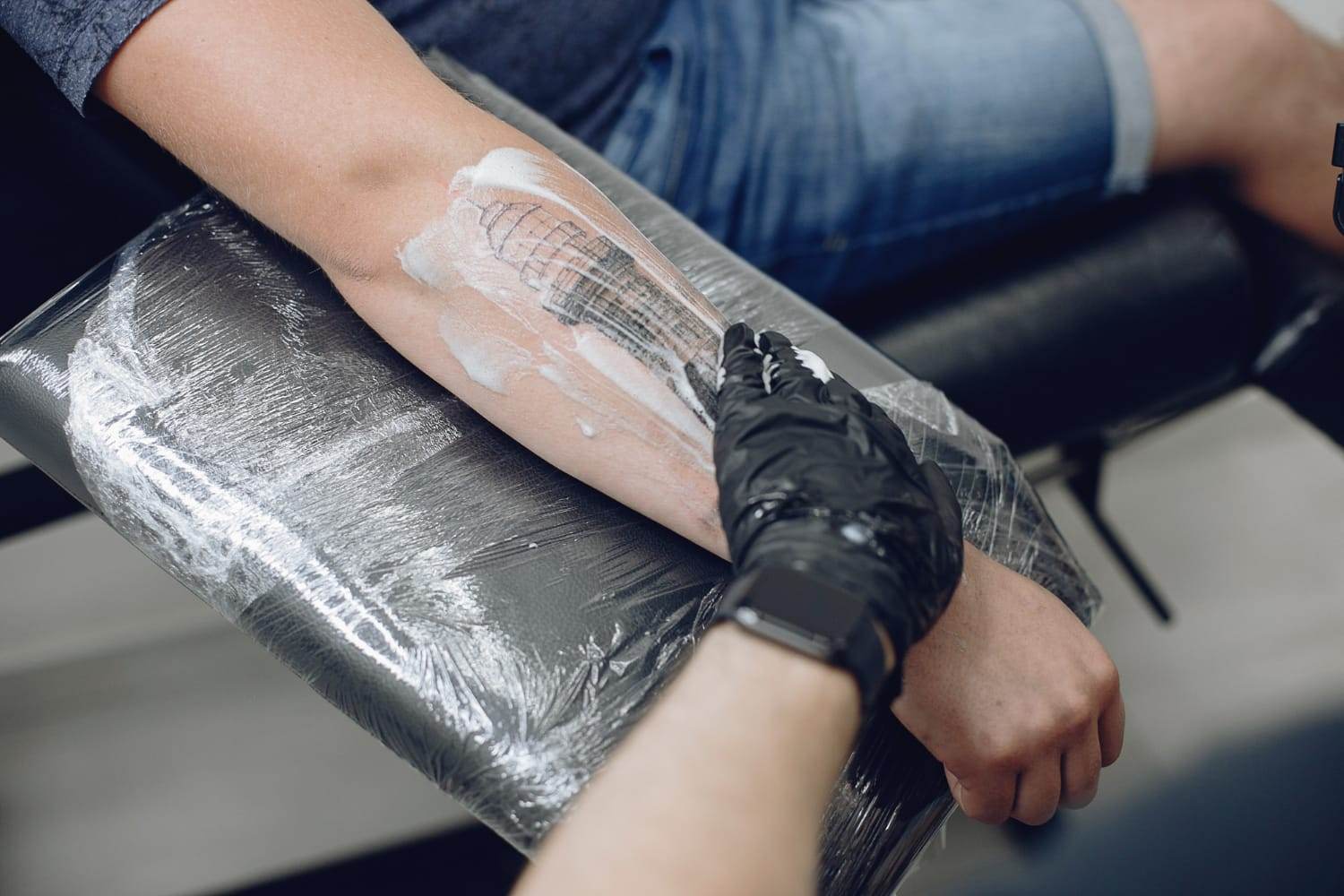Tattoos have become increasingly popular in recent years, with more and more people getting inked. However, as the popularity of tattoos has grown, so has the demand for tattoo removal. Whether it’s due to a change in personal taste, a desire to remove a tattoo associated with a past relationship, or simply regretting a decision made in the heat of the moment, many individuals are seeking ways to remove their tattoos.
While laser tattoo removal is the most common method used today, there are also non-laser tattoo removal methods available. These methods offer an alternative for those who may not be suitable candidates for laser treatment or prefer a different approach. Non-laser tattoo removal methods can be effective in fading or completely removing tattoos, depending on the individual and the specific method used.
Types of Non-Laser Tattoo Removal Methods
1. Chemical Peels:
Chemical peels involve applying a solution to the skin that causes the top layers to peel off, taking the tattoo ink with them. This method is typically used for smaller tattoos and may require multiple sessions for complete removal. Chemical peels can be effective in fading tattoos, but they may not completely remove all traces of ink.
2. Dermabrasion:
Dermabrasion is a process that involves using a high-speed rotary device to remove the top layers of skin, along with the tattoo ink. This method is more invasive than chemical peels and may require local anesthesia. Dermabrasion can be effective in removing tattoos, but it may also cause scarring and pigmentation changes.
3. Salabrasion:
Salabrasion is a natural alternative to chemical peels and dermabrasion. It involves applying a saltwater solution to the skin and then using an abrasive tool to scrub away the top layers of skin. This method can be effective in fading tattoos, but it may not completely remove all traces of ink. Salabrasion may also cause temporary discomfort and redness.
4. Excision:
Excision is a surgical method that involves cutting out the tattooed skin and stitching the surrounding skin together. This method is typically used for smaller tattoos and may require local anesthesia. Excision can be effective in completely removing tattoos, but it may also cause scarring and pigmentation changes.
5. Cryosurgery:
Cryosurgery is a method that involves freezing the tattooed skin using liquid nitrogen or another freezing agent. The frozen skin is then removed, along with the tattoo ink. This method can be effective in removing tattoos, but it may also cause blistering and pigmentation changes.
6. Tattoo Removal Creams:
Tattoo removal creams are topical products that claim to fade or remove tattoos over time. These creams typically contain ingredients that help break down the tattoo ink and promote skin regeneration. While some individuals may see results with tattoo removal creams, they are generally less effective than other methods and may take longer to show results.
7. Home Remedies:
There are also various home remedies that people claim can help fade or remove tattoos. These remedies include using lemon juice, salt, aloe vera, and other natural ingredients. While some individuals may see slight fading with these methods, they are generally not as effective as professional treatments and may not completely remove the tattoo.
Chemical Peels for Tattoo Removal: How It Works
Chemical peels for tattoo removal involve applying a solution to the skin that causes the top layers to peel off, taking the tattoo ink with them. The solution used in chemical peels can vary, but it typically contains ingredients such as glycolic acid or trichloroacetic acid (TCA). These acids work by breaking down the tattoo ink and promoting skin regeneration.
Chemical peels can be effective in fading tattoos, but they may not completely remove all traces of ink. Multiple sessions are usually required for optimal results, and the number of sessions will depend on factors such as the size and color of the tattoo. The process can be uncomfortable, and there may be some redness and swelling afterward. However, these side effects are usually temporary and can be managed with proper aftercare.
One of the advantages of chemical peels for tattoo removal is that they can be used on a variety of skin types and colors. However, it’s important to note that chemical peels may not be suitable for everyone. Individuals with certain skin conditions or sensitivities may not be good candidates for this method. It’s always best to consult with a professional before undergoing any tattoo removal treatment.
Dermabrasion for Tattoo Removal: Pros and Cons
Dermabrasion is a more invasive method of tattoo removal that involves using a high-speed rotary device to remove the top layers of skin, along with the tattoo ink. This method is typically performed under local anesthesia to minimize discomfort. The procedure can cause some bleeding and may require a few days of downtime for proper healing.
Dermabrasion can be effective in removing tattoos, but it may also cause scarring and pigmentation changes. The depth of the treatment will determine the extent of scarring, so it’s important to choose an experienced professional who can perform the procedure safely. It’s also worth noting that dermabrasion may not completely remove all traces of ink, especially for larger or more complex tattoos.
One advantage of dermabrasion is that it can be used on a variety of skin types and colors. However, individuals with certain skin conditions or sensitivities may not be good candidates for this method. It’s important to consult with a professional to determine if dermabrasion is the right option for you.
Salabrasion for Tattoo Removal: A Natural Alternative
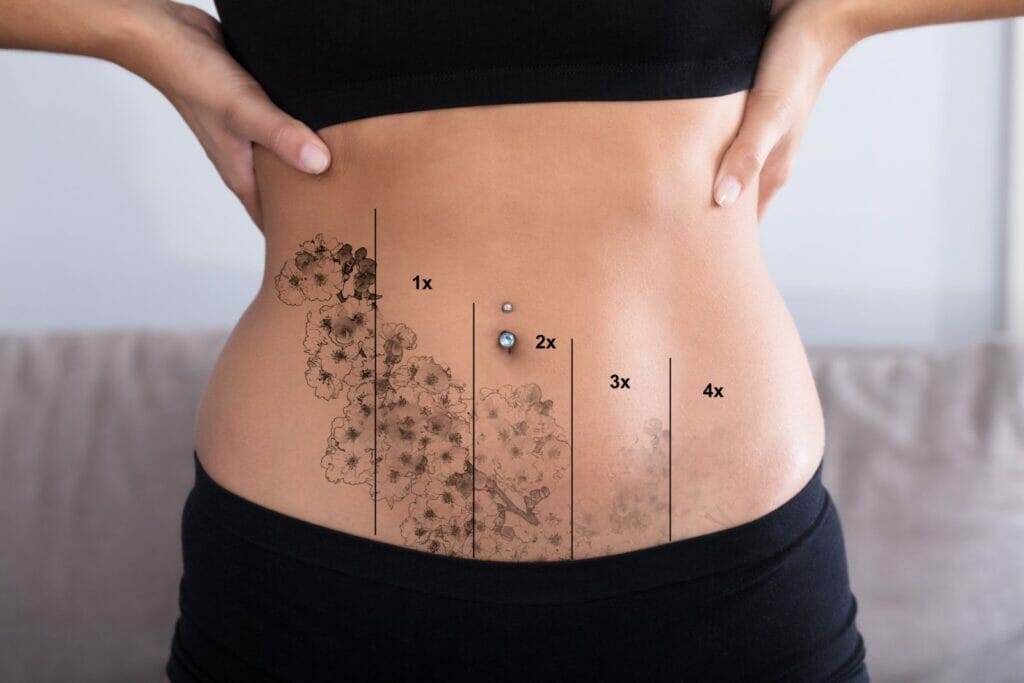
Salabrasion is a natural alternative to chemical peels and dermabrasion for tattoo removal. This method involves applying a saltwater solution to the skin and then using an abrasive tool, such as a sponge or brush, to scrub away the top layers of skin. The saltwater solution helps to break down the tattoo ink, while the abrasive tool helps to remove the ink along with the skin.
Salabrasion can be effective in fading tattoos, but it may not completely remove all traces of ink. Multiple sessions are usually required for optimal results, and the number of sessions will depend on factors such as the size and color of the tattoo. The process can be uncomfortable, and there may be some redness and swelling afterward. However, these side effects are usually temporary and can be managed with proper aftercare.
One advantage of salabrasion is that it is a natural alternative to more invasive methods. It does not involve the use of chemicals or high-speed devices, making it a gentler option for those with sensitive skin. However, it’s important to note that salabrasion may not be suitable for everyone. Individuals with certain skin conditions or sensitivities may not be good candidates for this method. It’s always best to consult with a professional before undergoing any tattoo removal treatment.
Excision for Tattoo Removal: Surgical Option Explained
Excision is a surgical method of tattoo removal that involves cutting out the tattooed skin and stitching the surrounding skin together. This method is typically used for smaller tattoos and may require local anesthesia. The procedure can cause some bleeding and may require a few days of downtime for proper healing.
Excision can be effective in completely removing tattoos, but it may also cause scarring and pigmentation changes. The size and location of the tattoo will determine the extent of scarring, so it’s important to choose an experienced professional who can perform the procedure safely. It’s also worth noting that excision may not be suitable for all individuals, especially those with certain medical conditions or sensitivities.
One advantage of excision is that it can provide immediate results, as the tattoo is physically removed from the skin. However, it’s important to consider the potential risks and side effects associated with this method. It’s always best to consult with a professional to determine if excision is the right option for you.
Cryosurgery for Tattoo Removal: Freezing the Ink Away
Cryosurgery is a method of tattoo removal that involves freezing the tattooed skin using liquid nitrogen or another freezing agent. The frozen skin is then removed, along with the tattoo ink. This method can be effective in removing tattoos, but it may also cause blistering and pigmentation changes.
Cryosurgery can be performed under local anesthesia to minimize discomfort. The procedure can cause some redness and swelling afterward, but these side effects are usually temporary and can be managed with proper aftercare. Multiple sessions may be required for optimal results, depending on factors such as the size and color of the tattoo.
One advantage of cryosurgery is that it can be used on a variety of skin types and colors. However, individuals with certain medical conditions or sensitivities may not be good candidates for this method. It’s always best to consult with a professional before undergoing any tattoo removal treatment.
Tattoo Removal Creams: Do They Really Work?
Tattoo removal creams are topical products that claim to fade or remove tattoos over time. These creams typically contain ingredients such as hydroquinone, kojic acid, or alpha-arbutin, which help break down the tattoo ink and promote skin regeneration.
While some individuals may see results with tattoo removal creams, they are generally less effective than other methods and may take longer to show results. The effectiveness of tattoo removal creams can vary depending on factors such as the size and color of the tattoo, as well as the individual’s skin type and response to the product.
One advantage of tattoo removal creams is that they are non-invasive and can be used at home. However, it’s important to follow the instructions carefully and be patient, as results may take several months or longer to become noticeable. It’s also worth noting that tattoo removal creams may not completely remove all traces of ink, especially for larger or more complex tattoos.
Home Remedies for Tattoo Removal: Are They Safe?
There are various home remedies that people claim can help fade or remove tattoos. These remedies include using lemon juice, salt, aloe vera, and other natural ingredients. While some individuals may see slight fading with these methods, they are generally not as effective as professional treatments and may not completely remove the tattoo.
It’s important to approach home remedies with caution, as they may not be safe or suitable for everyone. Some ingredients used in home remedies can cause skin irritation or allergic reactions. It’s always best to consult with a professional before trying any home remedy for tattoo removal.
Aftercare Tips for Non-Laser Tattoo Removal
Aftercare is an important part of the tattoo removal process, regardless of the method used. Proper aftercare can help promote healing, minimize discomfort, and reduce the risk of complications. Here are some tips for proper aftercare:
1. Keep the treated area clean and dry.
2. Avoid exposing the treated area to direct sunlight.
3. Apply a thin layer of antibiotic ointment or petroleum jelly to the treated area.
4. Avoid picking at scabs or peeling skin.
5. Avoid swimming or soaking in water for at least a week after treatment.
6. Follow any specific aftercare instructions provided by your healthcare provider.
It’s important to follow these aftercare tips to ensure optimal results and minimize the risk of complications. If you have any concerns or questions about aftercare, don’t hesitate to reach out to your healthcare provider.
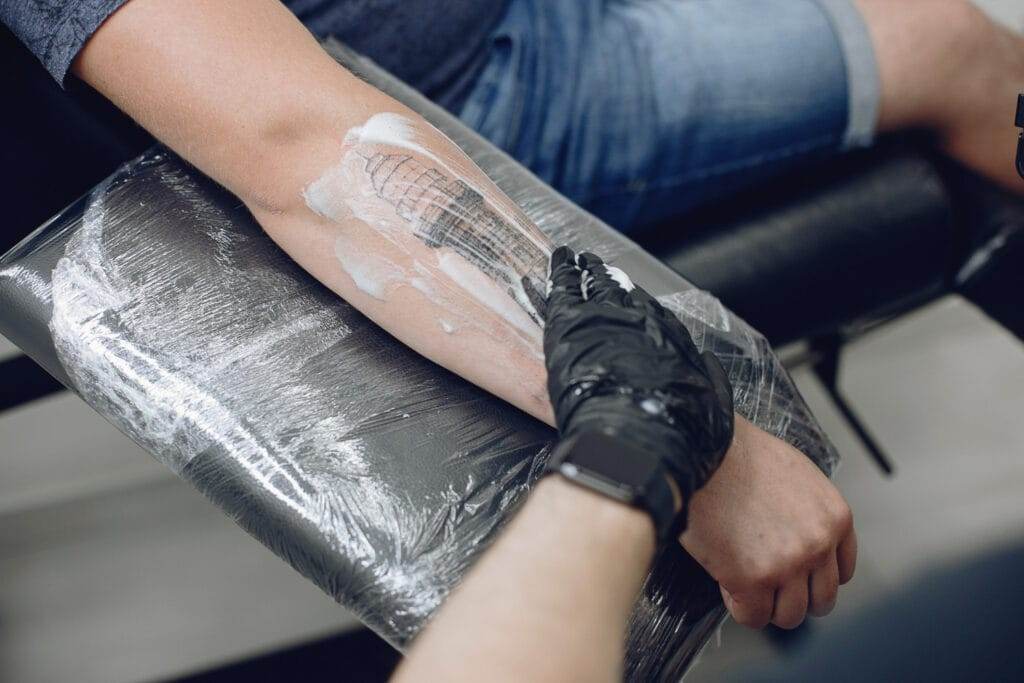
Choosing the Best Non-Laser Tattoo Removal Method for You
When it comes to non-laser tattoo removal, there are several methods to choose from. The best method for you will depend on factors such as the size and color of your tattoo, your skin type and sensitivity, and your personal preferences. It’s important to consult with a professional to determine which method is the most suitable for your individual needs.
While non-laser tattoo removal methods can be effective in fading or removing tattoos, it’s important to have realistic expectations. Complete removal of a tattoo may not always be possible, especially for larger or more complex tattoos. It’s also worth noting that some methods may cause scarring or pigmentation changes.
Ultimately, the decision to remove a tattoo is a personal one. If you’re considering tattoo removal, take the time to research and explore your options. Consult with a professional to discuss your goals and concerns. With the right approach and proper aftercare, you can achieve the results you desire.

